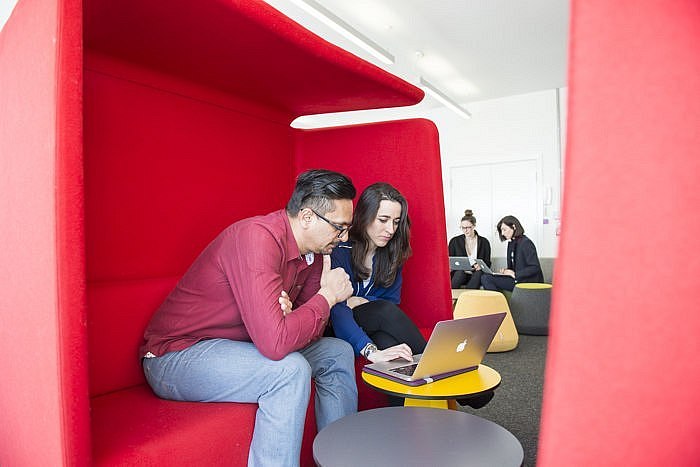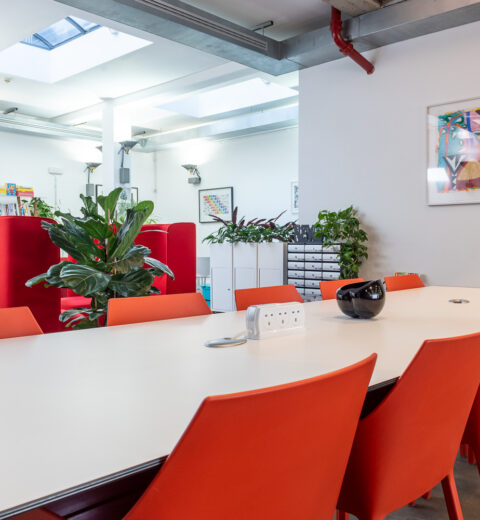How Managers Can Help Reduce Stress In The Workplace (And How It’ll Benefit Your Business)
Modern workers are interrupted up to seven times per hour and distracted 2.1 hours a day on average. With increasing workloads, corporate restructurings, and a growing uncertainty – it’s understandable that more than 40% of adults say that they lie awake at night worrying about the stressful events of the day. Although this stress is understandable under current conditions, this level of out of hours stress shouldn’t just be considered acceptable. Is there a way for managers to help reduce stress in the workplace? And how do you help reduce the feeling of being overwhelmed and overly busy that employees will undoubtedly have from time to time?
Set clear goals
As a manager, it’s your job to set clear goals for your team. Although a lot of managers will have to report back to even more senior members of staff – it is vital that the goals are ambitious yet achievable. Set the bar too high, and your team is likely to suffer and fall behind. As soon as a single member of staff is falling behind, stress can spread like wildfire. When employees are constantly playing catch up, the quality of the work that they produce will suffer. This won’t necessarily be intentional, but due to late tasks weighing on their shoulders – they are more inclined to want to get things done quickly instead of properly.

Minimise interruptions
It’s easy to be feel bombarded when the phone won’t stop ringing and push notifications are coming through your phone non-stop. Whilst a distraction once in a while can be a healthy addition to the working schedule, there are simply too many random interruptions for employees to focus on the task at hand. Allow employees to control their own interruptions, but encourage that they deal with it proactively.

It could be accepting interruptions because they may contain important information that needs to be dealt with asap, setting up schedules for answering emails or blocking push notifications between 9am and 12pm. Interruptions are inversely correlated with productivity. As interruptions go up, productivity goes down. If you can find a way to make sure that employees are only interrupted when it is of utmost importance – you’re likely to see productivity levels go up.
Build a flexible work environment
It’s important to remember that salary isn’t everything in the world of job satisfaction and happiness. People are increasingly looking for roles and companies that offer flexible work environments where they can work – when they work best. If someone has a kid that needs to be picked up at 3pm, let them shuffle their hours around so they get their hours done in the early morning, or by staying late one night. If someone can’t focus early in the morning, allow them to work 10-18. There’s no use for people to sit around trying to work when their head is elsewhere. Instead, if their job role allows it, have them work out their own schedule for the 37.5 hours week and then let them run their own show, within reason. When people aren’t focusing properly, productivity drops. And when employees can’t make their day to day life work with picking up kids from school, making it to 6pm soccer practice on a Thursday or getting that one day off the need to go see a new house – then is it really a place you’d want to work yourself?
Encourage exercise
We’ve all heard this a thousand times, exercise is good for you. Yes, we know. That said, working a little exercise into the daily work routine or actively encouraging (perhaps even incentivizing) your employees to get moving can really reduce stress as well as boost overall health, morale, and productivity. Physical activity helps clear the mind and improves alertness – all massively benefitting personal productivity. It also helps to prevent illnesses.

Nail workplace recognition
We all like to be told when we’ve done a good job. Studies have shown that employees feel appreciated when their work gets noticed, and those who have a personal positive report with their management are more likely to be engaged in their work. How exactly you recognize the work that your employees and colleagues are doing, is up to you. But you need to make sure that the individual employee feels that he/she is making a difference and bringing value to the company. Because the truth is, without Bob Katie and Zac, you wouldn’t get X Y and Z done! When employees feel recognized, they are happier and they do better work. Ultimately, this is what every manager wants, isn’t it?

Don’t just talk the talk – walk the walk
This should be your motto for, well anything. Preaching the value of decompressing means very little if you are always in the office and rushing through tasks as if your life depended on it. Employee stress leads to poor job performance and penultimately, burnout. You need to make sure that you allow yourself some downtime too. Burnout doesn’t always send out a warning, it hits you when you least expect it. By remembering to take your own holidays, chilling out once in a while, having a laugh, bringing some exercise into the work routine you are encouraging employees to do the same. Reducing workplace stress usually leads to a more productive environment and a more energized workforce.
Build a strong health and safety culture
A strong health and safety culture is a culture where there is a very little deviation from rules and regulations, but it is also a culture where there’s a two-way channel of communication between managers and employees. If employees feel they need to cut corners in order to finish tasks on time, you’ve either got a very poor health and safety culture, or you are setting the bar too high. The health and safety of your employees should always come first, make sure that your employees know where you stand, and that they should never have to break or bend the rules to finish a task on time.
About Safety Training Scotland
Safety Training Scotland was founded in 2013 and has since delivered IOSH health and safety courses to over 2000 successful delegates. From training young people just starting out their career to senior level staff, we’re passionate about changing the negative perception of health and safety training. At Safety Training Scotland, we see it our finest mission to put an end to ‘death by powerpoint’ and make H&S training interesting and engaging.



